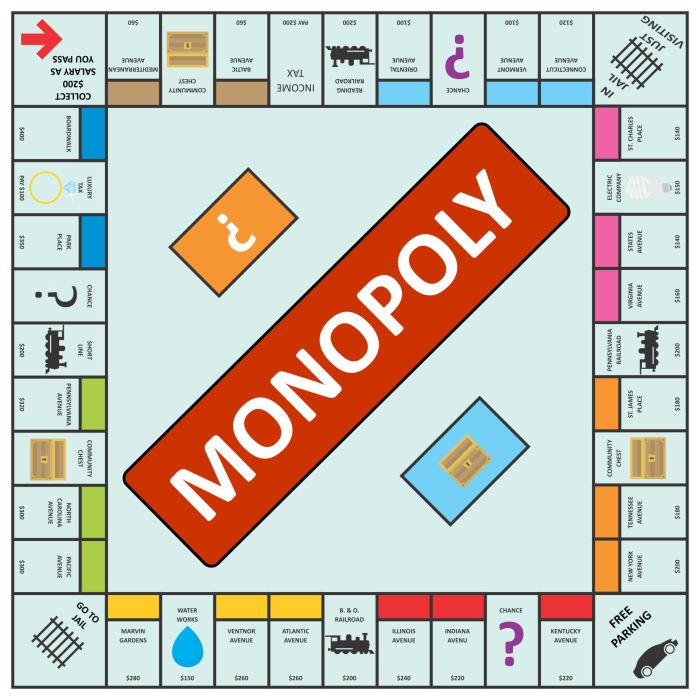
Family-friendly card games are a fantastic way to bring loved ones together, offering not just entertainment but also a chance to create lasting memories. These games cater to players of all ages, making them perfect for family gatherings, rainy days, or cozy nights in.
From classic favorites to innovative new games, each brings its own unique set of rules and gameplay mechanics that encourage interaction and fun. Many families have their own traditions centered around these games, where laughter and friendly competition reign supreme.
Popular Family-Friendly Card Games
Family-friendly card games offer an excellent way to bring everyone together, encouraging laughter, strategic thinking, and a little friendly competition. These games provide entertainment for all ages, making them perfect for family gatherings, game nights, or casual get-togethers. Whether you’re looking for something simple for younger players or a bit more challenging for older kids and adults, there are plenty of options to choose from that can cater to your family’s preferences.Among the many family-friendly card games, a few stand out due to their popularity, accessibility, and engaging gameplay.
Below are some top picks that have proven to be crowd favorites, complete with rules and mechanics to help you get started.
Uno
Uno is a timeless classic that combines color matching with strategic gameplay, making it suitable for ages 7 and up. The objective of the game is to be the first player to score 500 points, achieved by getting rid of all your cards before your opponents.
Setup
Each player is dealt seven cards. The remaining cards form a draw pile, and the top card is placed face-up to start the discard pile.
Gameplay
Players take turns matching a card from their hand to the top card of the discard pile based on color or number. If a player cannot play a card, they must draw one from the draw pile. If they can play the drawn card, they may do so immediately.
Special Cards
Skip
The next player misses their turn.
Reverse
Changes the direction of play.
Draw Two
The next player draws two cards and loses their turn.
Wild
The player can choose a color to continue play.
Wild Draw Four
The player chooses a color and the next player draws four cards. A memorable experience my family had with Uno was during a rainy afternoon when we were stuck indoors. The game quickly escalated into a hilarious showdown, with everyone shouting “Uno!” at the top of their lungs whenever they were one card away from victory.
Exploding Kittens
Exploding Kittens is a quirky and humor-filled card game for ages 7 and up that revolves around strategy and luck. The goal is to avoid drawing an Exploding Kitten card while trying to eliminate opponents.
Setup
The deck consists of 56 cards, including Exploding Kittens, defuse cards, and various action cards. Players are dealt four cards each, and the remaining cards are shuffled to create a draw pile.
Gameplay
On their turn, players can perform one action, such as playing a card from their hand or drawing a card from the draw pile. If a player draws an Exploding Kitten, they must show it immediately and are out of the game unless they have a defuse card.
Special Cards
Defuse
Allows the player to place the Exploding Kitten back into the deck in a strategic location.
Action Cards
Players can steal cards, skip their turn, or force others to draw multiple cards.Playing Exploding Kittens created unforgettable moments for our family, especially when my younger sibling tried to bluff us into thinking they had a defuse card, only to draw an Exploding Kitten instead!
Skip-Bo
Skip-Bo is a fun and engaging sequencing card game that’s perfect for players aged 7 and up. The objective is to be the first to play all of your stockpile cards onto the building piles.
Setup
Players are dealt a stockpile of 30 cards, and the remaining cards form the draw pile. Players can only look at the top card of their stockpile.
Gameplay
Players take turns drawing cards from the draw pile and playing cards from their hand or stockpile onto the building piles in numerical sequence, starting from 1 and going up to 12.
Special Rules
Players can build on any of the piles as long as they follow the sequence.
Skip-Bo cards serve as wild cards and can be used as any number.
Our family has spent countless evenings playing Skip-Bo, often turning it into a light-hearted competition. One time, my mom, known for her strategic mind, managed to empty her stockpile in record time, leaving the rest of us in awe of her card-playing skills.
The Benefits of Playing Card Games with Family
Playing card games with family is not just a fun pastime; it offers numerous cognitive and social benefits that can enhance relationships and improve communication. Engaging in these activities fosters an environment of interaction, learning, and shared experiences, making it an excellent way to bring families closer together.Playing card games has been shown to enhance cognitive skills, such as critical thinking, strategy development, and memory retention.
These games often require players to think ahead, plan their moves, and adapt to changing circumstances, fostering essential analytical skills. Moreover, the social aspect of playing cards helps in developing communication skills. Whether it’s discussing strategies or playfully arguing about game rules, these interactions promote dialogue and understanding among family members, which is crucial in building strong relationships.
Strengthening Family Bonds and Improving Communication
Card games serve as a bridge for strengthening family ties and enhancing communication dynamics. The shared experience of playing games not only creates lasting memories but also encourages teamwork and collaboration among family members. Here are some key advantages of card games in fostering family connections:
-
Quality Time Together:
Card games create an opportunity for family members to spend quality time together, away from screens and other distractions, reinforcing emotional connections.
-
Encouraging Dialogue:
Engaging in spirited gameplay often leads to conversations about strategies and experiences, enhancing communication skills across all age groups.
-
Teaching Values:
Card games can teach important life lessons such as patience, fairness, and sportsmanship, promoting values that contribute to a healthy family atmosphere.
-
Creating Traditions:
Regular card game nights can become cherished family traditions, giving everyone something to look forward to and bonding over shared experiences.
Family traditions centered around card games often become a cherished part of family culture. For instance, many families dedicate one night a week to play games, where everyone brings their favorite snacks and enjoys a relaxed, fun-filled evening. Other families celebrate special occasions, such as birthdays or holidays, with friendly card tournaments that create a lively and competitive atmosphere. Such traditions not only promote bonding but also keep family histories alive through stories shared during gameplay, enriching the family narrative and instilling a sense of belonging among members.
Comparing Card Games to Other Family Games

Card games have long been a cherished pastime within families, but how do they stack up against other types of family games? By examining the entertainment and engagement levels of card games compared to board games, analyzing the differences in gameplay and interaction with arcade games, and considering how online games offer alternative fun, we can gain a deeper understanding of their unique appeal.
Entertainment and Engagement Levels Compared to Board Games
Card games and board games both have their own charms, but they cater to slightly different experiences. Board games often require a designated space and can involve more elaborate setups, which may lead to longer play sessions. In contrast, card games are usually more portable and can be played in a variety of settings, from the dining table to a picnic blanket.
This versatility makes card games an accessible option for spontaneous family fun.
- Card games typically have quicker rounds, promoting faster-paced play and allowing for multiple games in a single sitting.
- Board games often rely on strategic thinking and may require more time to learn; however, this can deepen engagement as families work together or compete against each other.
- The tactile experience of handling cards can enhance social interaction, as players often share reactions and engage in discussions more naturally compared to the more structured environment of board games.
Differences in Gameplay and Interaction with Arcade Games
When comparing card games to arcade games, the fundamental differences in gameplay and interaction become clear. Arcade games typically involve fast-paced action and competition, often through digital screens, which can create a more solitary experience despite the presence of others.
- Card games foster direct interaction among players, encouraging conversation, banter, and collaboration; this communal aspect can strengthen family bonds.
- Arcade games may promote individual skill development, but they often lack the collaborative strategy that card games encourage as players work together to achieve a common goal or compete in friendly rivalry.
- The sensory experience in arcade games—such as sound effects, visuals, and the thrill of the game—can be exhilarating, but the simplicity and accessibility of card games make them easier for families to engage with across different ages and skill levels.
Alternative Family Fun through Online Games
The rise of online gaming has provided families with new avenues for entertainment, but it presents a different dynamic compared to traditional card games. Online games can bridge geographical distances, allowing families to engage with one another even when physically apart.
- Many online games include interactive elements that mimic card game mechanics, offering familiar gameplay while incorporating modern technology features such as virtual avatars and in-game communication.
- While online games can be engaging and fun, they may lack the face-to-face interaction that card games naturally provide, which can limit emotional connections during gameplay.
- Families can benefit from a hybrid approach where card games are complemented by online games, creating a balanced mix of personal and digital interaction that suits various preferences and situations.
Final Conclusion

In conclusion, family-friendly card games provide a wonderful blend of enjoyment and connection, fostering relationships while also promoting cognitive skills. Whether you’re playing a timeless classic or trying something new, these games are sure to brighten your family time and create cherished moments together.
Detailed FAQs
What are some examples of family-friendly card games?
Some popular examples include Uno, Go Fish, and Exploding Kittens, all of which are enjoyable for various age groups.
How can card games benefit family relationships?
Card games encourage communication, teamwork, and healthy competition, which can strengthen family bonds and improve relationships.
What age group is best suited for card games?
Most family-friendly card games are designed for players aged 4 and up, making them suitable for children, teens, and adults alike.
Can card games help with cognitive development?
Yes, playing card games can enhance cognitive skills such as critical thinking, memory, and strategic planning.
How do card games compare to board games?
Card games often require less setup and can be quicker to play, making them a more flexible option compared to board games.





